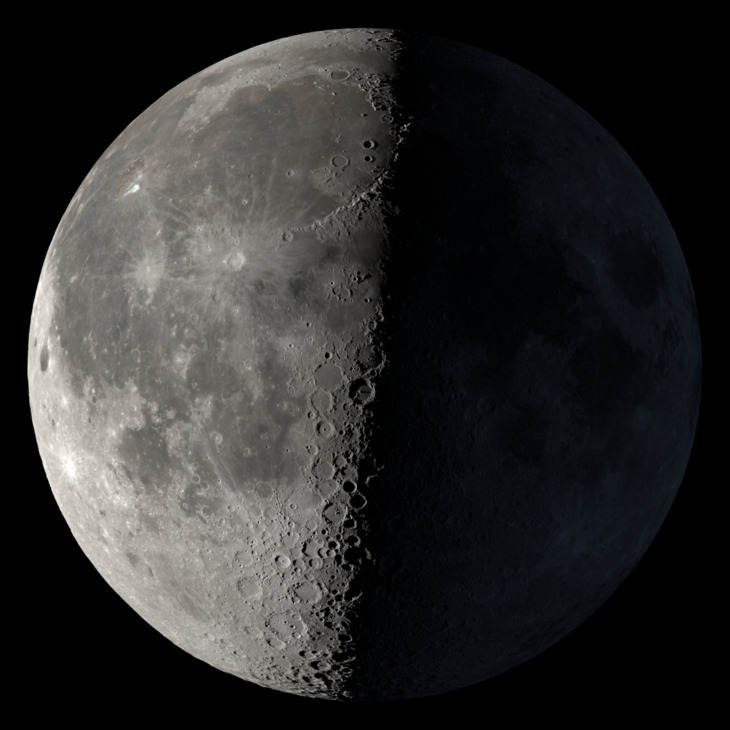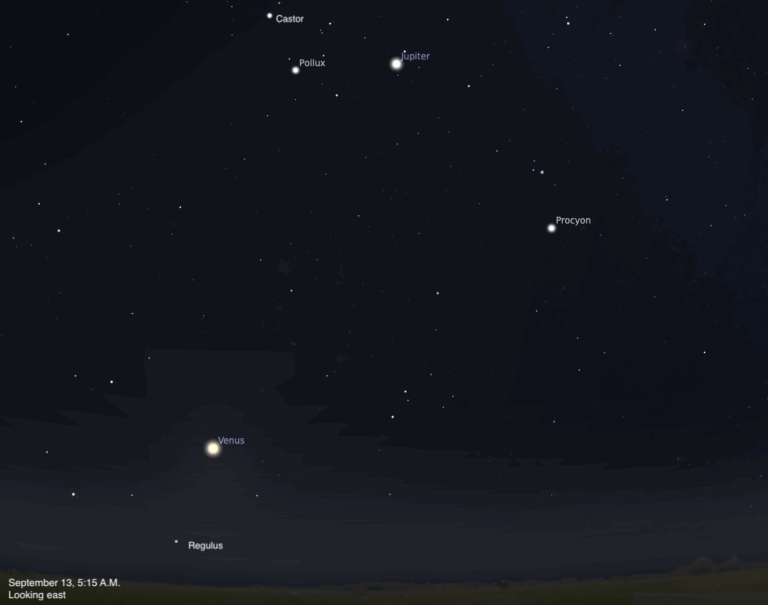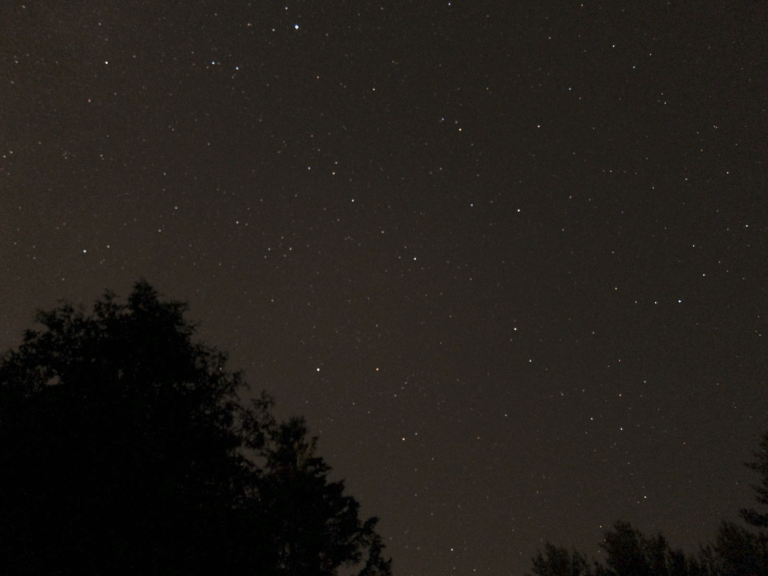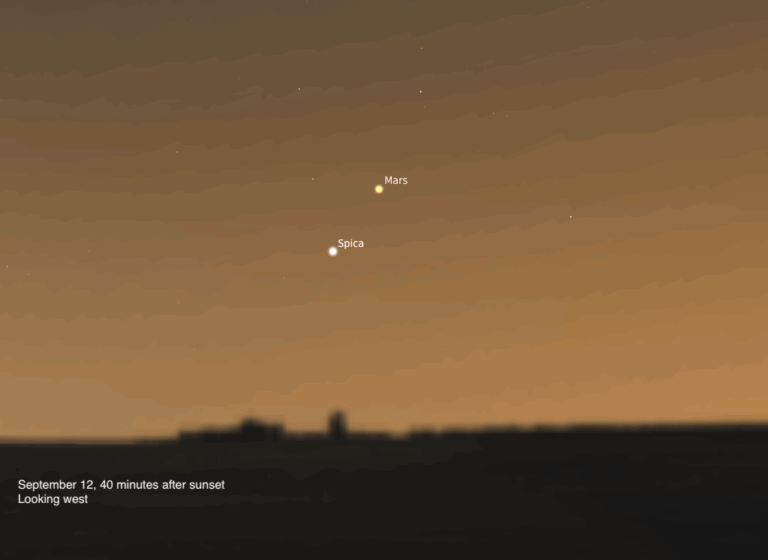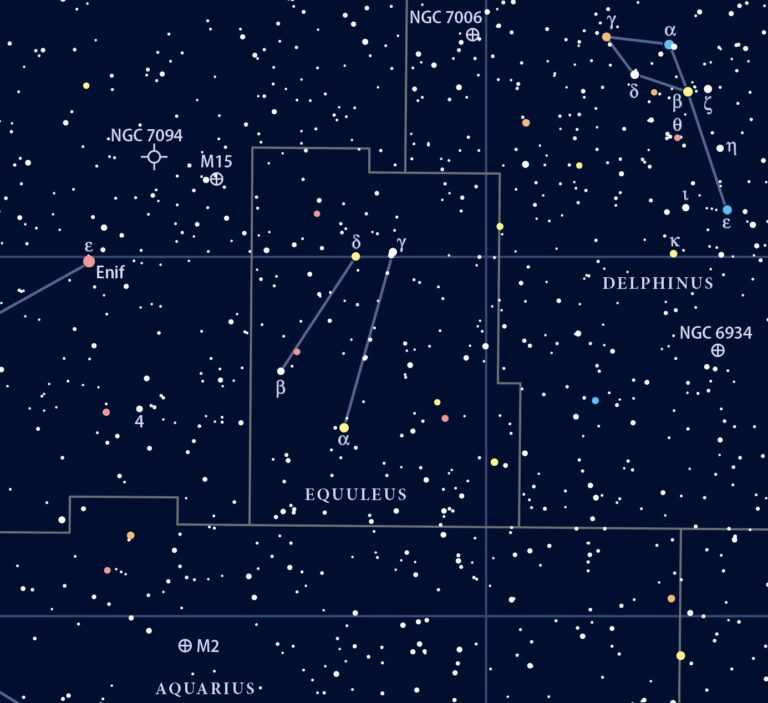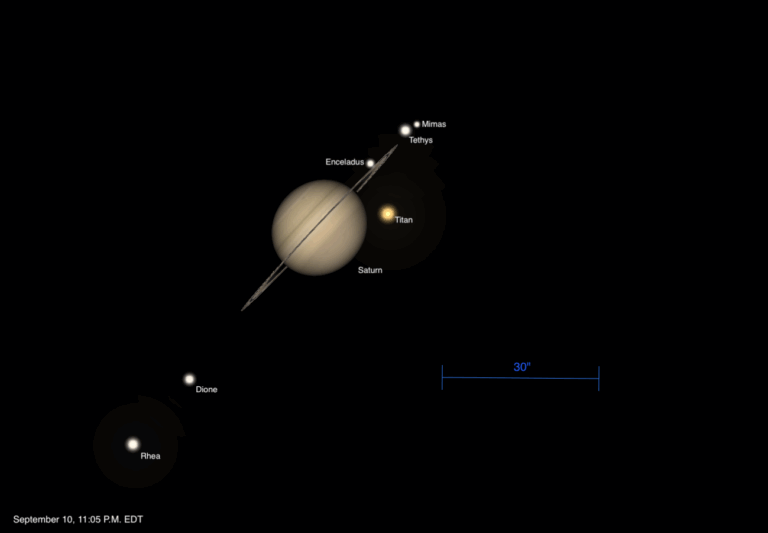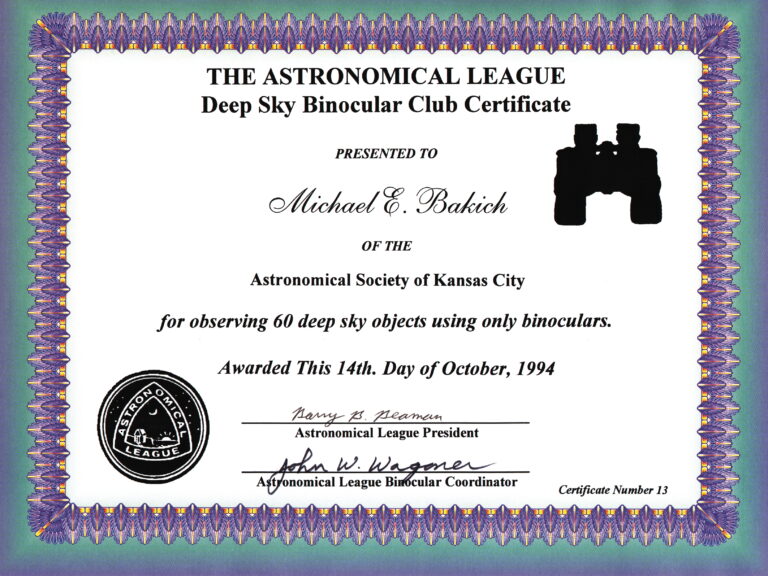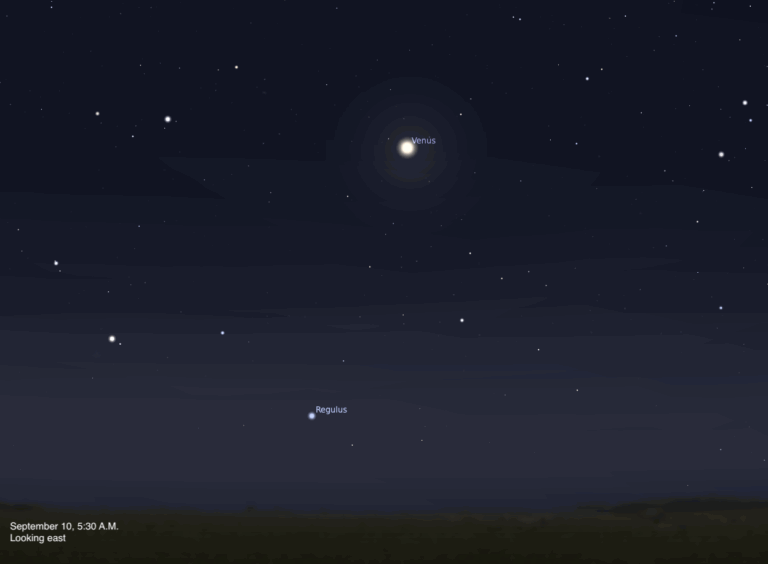Key Takeaways:
Although Mars reached opposition and peak visibility early this morning (officially at 1 a.m. EDT), it appears equally as good tonight. The Red Planet appears low in the southeast as darkness falls and grows more prominent as the evening wears on and it climbs higher. By 1 a.m. local daylight time, it stands about 25° high in the south against the backdrop of stars in southwestern Capricornus. The world shines at magnitude –2.8, brighter than it has been in 15 years. When viewed through a telescope, the planet’s ocher-colored disk spans 24.28″, though you likely won’t see much surface detail because a global dust storm continues to choke the martian atmosphere.
Full Moon arrives at 4:20 p.m. EDT, and it dominates the sky all night. Our satellite appears Full when it lies opposite the Sun in our sky, just as Mars does, so you might expect the two to appear close to each other. You’d be right: The Full Moon lies 7° north of the Red Planet. Skywatchers in the Eastern Hemisphere get a bonus tonight as the Moon plunges through Earth’s shadow. Observers across most of Europe, Asia, Africa, and Australia will see a total lunar eclipse. Totality runs from 19h30m to 21h13m UT (that’s before dawn on the 28th for people in eastern Asia and Australia). The 103 minutes of totality make this the longest lunar eclipse since 2000 — and the longest of the 21st century.
Saturday, July 28
Asteroid 4 Vesta should be an easy target through binoculars or a telescope this weekend as the bright Moon moves away from the minor planet’s home in southern Ophiuchus. With binoculars, start at magnitude 2.4 Eta (η) Ophiuchi and then drop south one field to magnitude 4.4 Xi (ξ) Oph. This evening, magnitude 6.3 Vesta lies 1.7° southeast of Xi.
Sunday, July 29
The Big Dipper’s familiar shape appears halfway up the northwestern sky as darkness falls. One of the summer sky’s finest binocular double stars marks the bend of the Dipper’s handle. Mizar shines at 2nd magnitude, some six times brighter than its 4th-magnitude companion, Alcor. Even though these two are not physically related, they make a fine sight through binoculars. (People with good eyesight often can split the pair without optical aid.) A small telescope reveals Mizar itself as double — and these components do orbit each other.
Monday, July 30
The Southern Delta Aquariid meteor shower peaks this morning. The nearly Full Moon remains in the sky all night, however, cutting the number of meteors visible significantly. Still, it’s worth keeping an eye out for the brightest “shooting stars.” All of the shower meteors appear to radiate from a point in the constellation Aquarius the Water-bearer.
Now just four days past opposition, Mars comes closest to Earth. At 4 a.m. EDT, the Red Planet lies 35.8 million miles (57.6 million kilometers) from us. You won’t be able to detect any differences in the ruddy world’s appearance, however. At closest approach, Mars shines 0.01 magnitude fainter and its disk appears 0.05″ bigger than it did at opposition.
Wednesday, August 1
Venus dominates the western sky after sunset. The dazzling object shines at magnitude –4.3 among the background stars of western Virgo. The planet appears 10° high an hour after sundown and sets just after 10 p.m. local daylight time. When viewed through a telescope, Venus appears 21″ across and 57 percent lit.
Thursday, August 2
Evenings this week are a great time to explore the constellation Sagittarius the Archer. This star group lies due south and at peak altitude between 10 and 11 p.m. local daylight time, well after the last vestiges of twilight have faded away. The brightest stars within the constellation form the shape of a teapot — a distinctive asterism once you’ve found it — though it’s misshapen this year with the presence of Saturn just north of these stars. The central regions of the Milky Way pass through Sagittarius, so it’s always worth exploring this area through binoculars or a telescope.
Friday, August 3
Although Jupiter reached opposition and peak visibility nearly three months ago, it remains a stunning sight from evening twilight until it sets around midnight local daylight time. Jupiter shines at magnitude –2.1 and dominates the southwestern sky as night falls. The gas giant resides among the background stars of Libra the Scales, 1.3° northwest of Zubenelgenubi (Alpha [α] Librae). If you view the planet through a telescope tonight, its disk spans 38″ and displays spectacular cloud-top detail. You’ll also see the gas giant’s four brightest moons. These are the biggest of Jupiter’s entourage of 79 satellites; this number grew by a dozen last week when astronomers announced their discovery of several more far-flung moons.
Last Quarter Moon occurs at 2:18 p.m. EDT. It doesn’t rise until 12.30 a.m. local daylight time tomorrow, however, by which time North American observers might notice that its phase has diminished to 44 percent lit. Earth’s only natural satellite spends the morning near the border between the constellations Aries the Ram and Taurus the Bull.
Sunday, August 5
Saturn reached its peak a little more than a month ago, when it appeared opposite the Sun in the sky, and our view of the ringed planet remains magnificent. It appears against the backdrop of northern Sagittarius, a region that climbs highest in the south between 10 and 11 p.m. local daylight time. Saturn continues to shine brightly, too, at magnitude 0.2. When viewed through binoculars, you’ll find the Trifid Nebula (M20) 2.5° west of the planet, with the even brighter Lagoon Nebula (M8) 1° south of the Trifid. But the best views of Saturn come through a telescope, which reveals the planet’s 18″-diameter disk surrounded by a dramatic ring system that spans 41″ and tilts 26° to our line of sight.




